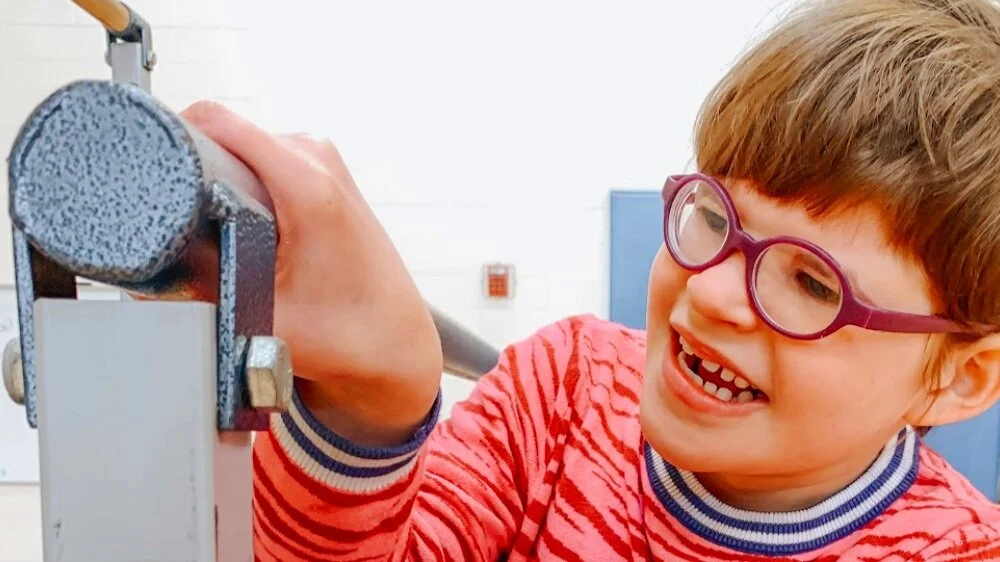This is part 3 of my series about inclusion. This’ll all make a lot more sense if you start at part 1. Click here to read part 1.
So we have an IEP meeting. An official one. Now the special ed director is there. Plus Tess’s regular ed classroom teacher. A whole room of folks. We talk about the 75% thing.
We’re not trying to be difficult. There’s a reason that we need to stick with including her. For example, one thing that concerns us is that Tess used to get invited to birthday parties and other outings. From kindergarten through third grade, she'd come home with an invite in her backpack. “Join us at this ice skating party.” “Come to this birthday shindig at this pizza place.”
This year in fourth grade? Zero birthday invitations for Tess. Zero invitations of any kind. One of her teachers said, “Well, in fourth grade this is when it starts to happen, that kids stop inviting the whole grade to their birthday parties.” And we said: “Last year in third grade it wasn't the whole class. It was often Tess and, like, five or six other people from a class of about 18. But Tess got invited. And now she doesn't.”
The special ed director, you may know him as Mike from earlier episodes, and Tess’s special ed teacher, who I’ll call Yvonne. They tell us how committed they are to inclusion. To making sure that they embody this philosophy of seeing Tess as a person who needs to be part of the community. Mike and Yvonne talk about this expert in inclusion from a local college, a woman they’ve hired to come in and train them about the best ways to do this.
My wife and I are sitting there wondering: why are you hiring this outside expert? You already have an expert on your payroll. Her name is Naomi. She was Tess’s special ed teacher every year before this. She nailed inclusion. From the first second Tess stepped into the building. We never had a concern about Tess being part of the community or percentages she was with them instead of off doing her own thing. And that’s why Tess had friends. That why Tess got invited to skating parties. That’s why I couldn’t go to our local grocery store without running into like three kids who would stop and pull on their mom or dad’s hand and say, hey that’s Tess, and wave to her and be delighted to recognize her and say hi.
After the meeting, we have more issues. An email arrives from Yvonne. It’s about the time on Tuesdays when Tess and another child with disabilities both board a school bus from Falmouth and ride to a school in Portland that has a pool. And they swim with a physical therapist, and then come back to school on that bus. During the time they’re in the pool, no one else is in there with them. This pool time is in Tess’s IEP. It’s critical for her development, working on swimming, the physical piece of it, the communication, all of it. But Yvonne tries to tell us that the ride to the pool with this one other classmate, the time in the pool with her PT, and the ride back. A huge chunk of her day on Tuesdays. That this somehow counts toward the 75%. The time when Tess is supposed to be with her mainstream peers.
We answer Yvonne. We ask her to explain how this could possibly be the case. And she says that it’s because the school with the pool is a public school. And the pool is public. And open to anyone. Since other kids could be in that school and that pool, it’s mainstream time.
This logic doesn’t really make sense. If you’re trying to figure out whether a given activity for Tess is with her typical peers, and the standard is whether it happens in a public school or not. Well then, since she goes to public school here in our town, couldn’t you just say her whole day is with her mainstream peers, no matter where she is or what she’s doing? You could literally stick her in a closet by herself the whole day, so she was totally alone. But since that closet’s in a public school, you’d be fine. And I think we can all agree that wouldn’t be right.
So my wife and I reject the whole public-school, public-pool logic. We write back to Yvonne and point out the contradiction.
How does this showdown end? Click here to read the conclusion in part 4.
